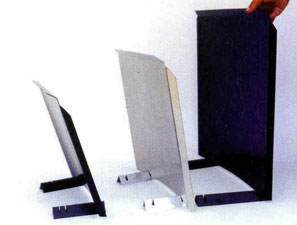
What is a Heat Shield?
Heat Shields are also referred to as Heat Reflectors or Firebacks. The primary purpose is to protect the back wall and extend the lifespan of the firebox.
Heat shields date back to the 15th century in Europe for wood-burning open fireplaces, when they were called fire backs. Most were constructed from an iron casting and were decorated with various designs. Beautiful ornate fire backs from Europe can still be found today. During the colonial times in the United States, cast iron fire backs were quite common. Today most typical American heat shields are made from stainless steel and are, for the most part, rather plain but functional.
What are the advantages of Heat Shields?
- Reduces heat by approximately one third to the firebox back wall
- The fire can be directly placed up next to the heat shield, reducing potential smoking problems
- Protects and prolongs firebox back wall patching repair
- May generate more heat from the fireplace due to the heat radiating into the room
-

Photo credit – RMR Products Without Heatshield
-

Photo credit – RMR Products With Heatshield
The bricks of the firebox (where you make your fire) in a masonry system sit inside a masonry chimney. This firebox has a lifespan of about 80 to 100 years, depending on usage and maintenance. The back wall of the firebox bears the brunt of the heat. It’s not uncommon for the bricks at the back wall of the firebox to reach temperatures upwards of 1000 degrees Fahrenheit. Eventually, the bricks and mortar of the back wall will deteriorate and develop cracks in the bricks and mortar. Heat shields will reduce the amount of heat to the back wall, thereby reducing the deterioration of the bricks and will extend the lifespan of the firebox.
It’s not uncommon for the back wall of a masonry firebox to develop cracks in the bricks and missing mortar joints. These should be repaired when this occurs. After the repair, we recommend installing a heat shield to extend the life of the repair to the back wall.
A heat shield may not be possible for use in prefab fireplaces. Fireboxes in prefab systems are typically smaller and shallower. Since the heat shield sits in front of the back wall by 3″ – 4″, the heat shield can push the grate too far forward, resulting in a chronic smoking problem when in use.
Some manufacturers of heat shields report that using heat shields will generate more heat into the room from the fireplace. This is certainly an added benefit but, in our experience, we have not found that this is necessarily true.
Heat shields serve a great benefit by reducing the heat to the back wall and extending the lifespan of the firebox.
